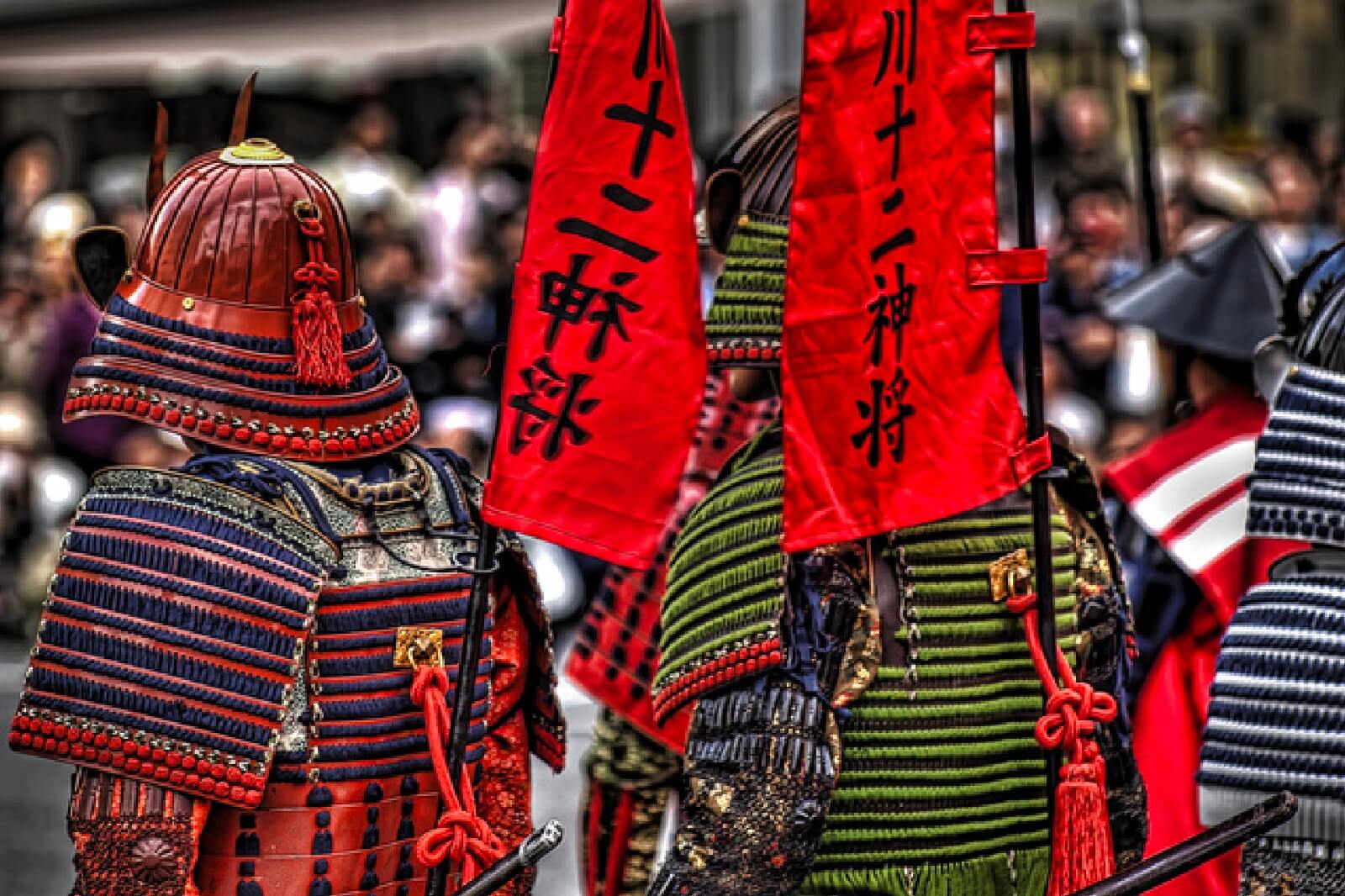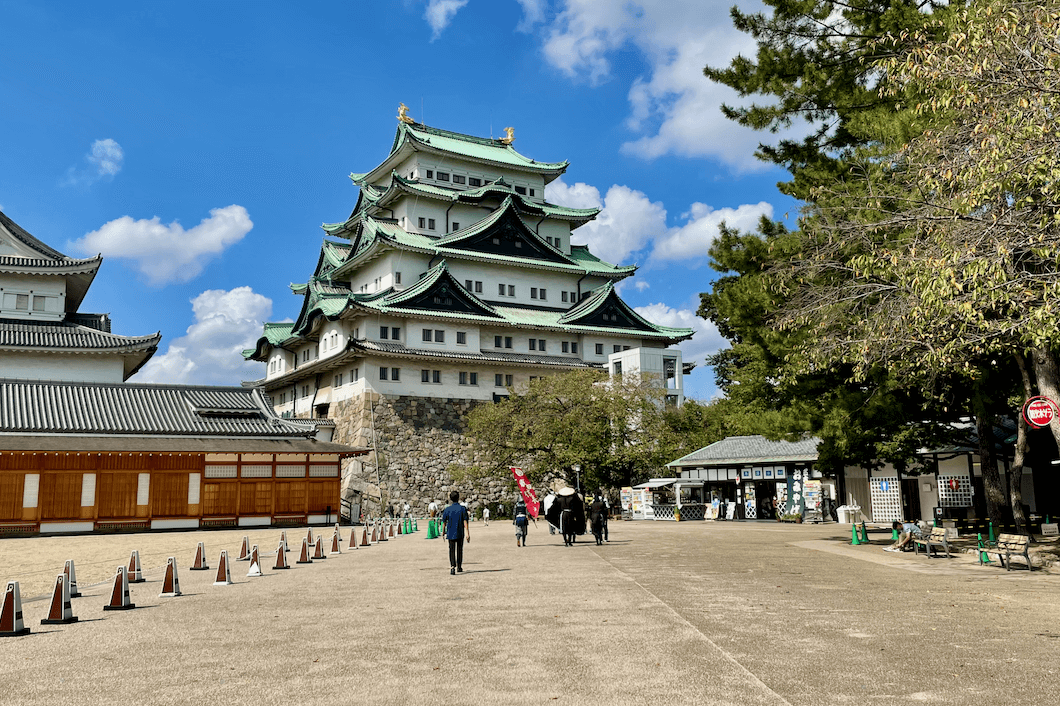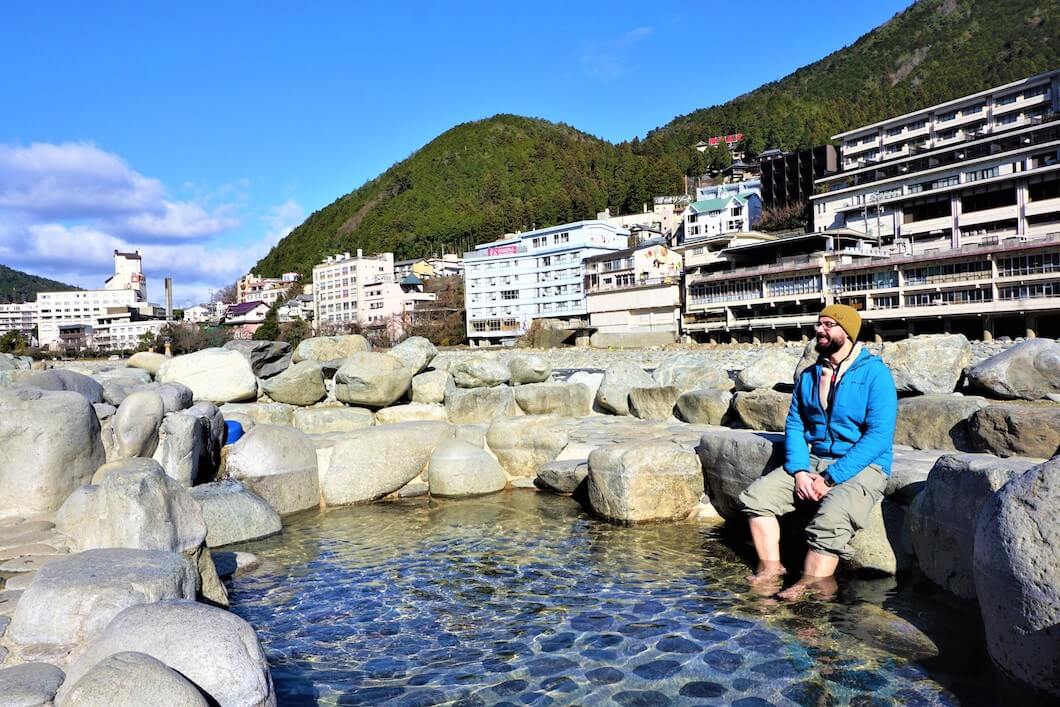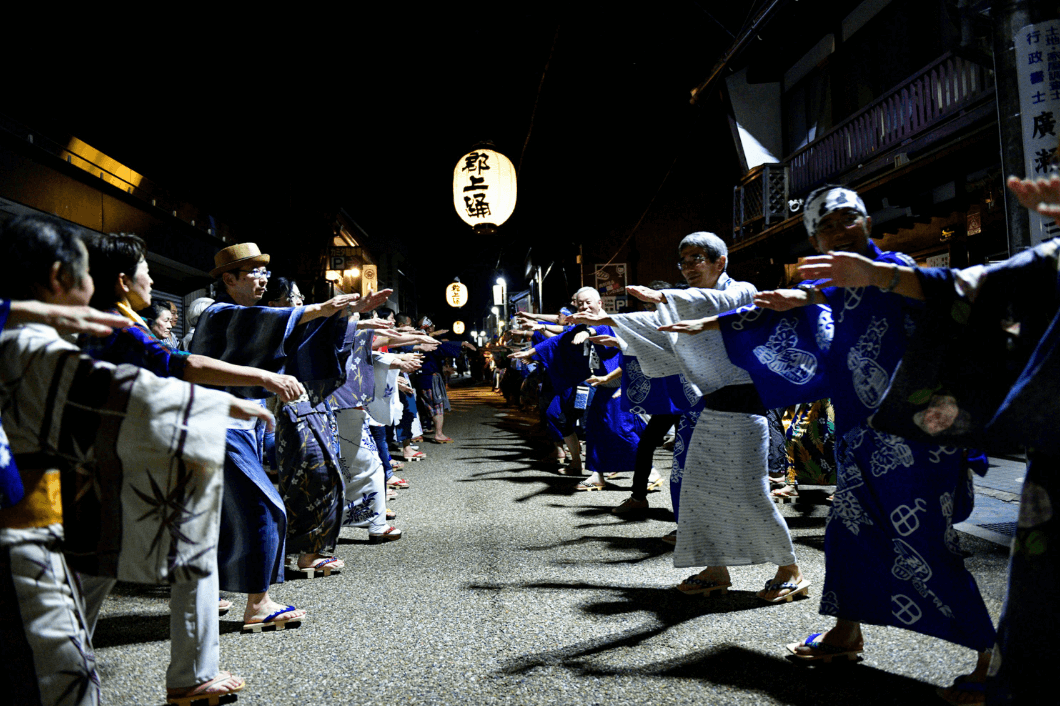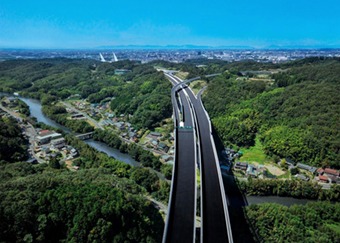In a modern country like Japan, how can we find traces of days gone by? When we hear the word "Japan," we probably think of fairy-tale temples, castles standing quietly in the moonlight, or cherry blossoms. But is that all? Do you think that in a country with cities where skyscrapers are being built every year, there should be no such thing as an old place steeped in history? That is, unfortunately, partially true. In Japan, since the Meiji Restoration, traditional architecture has been replaced by western-style architecture. However, there is a place where the past and the present are well balanced within an hour and a half from Tokyo by bullet train, or within 30 minutes from Kyoto. That is Nagoya.
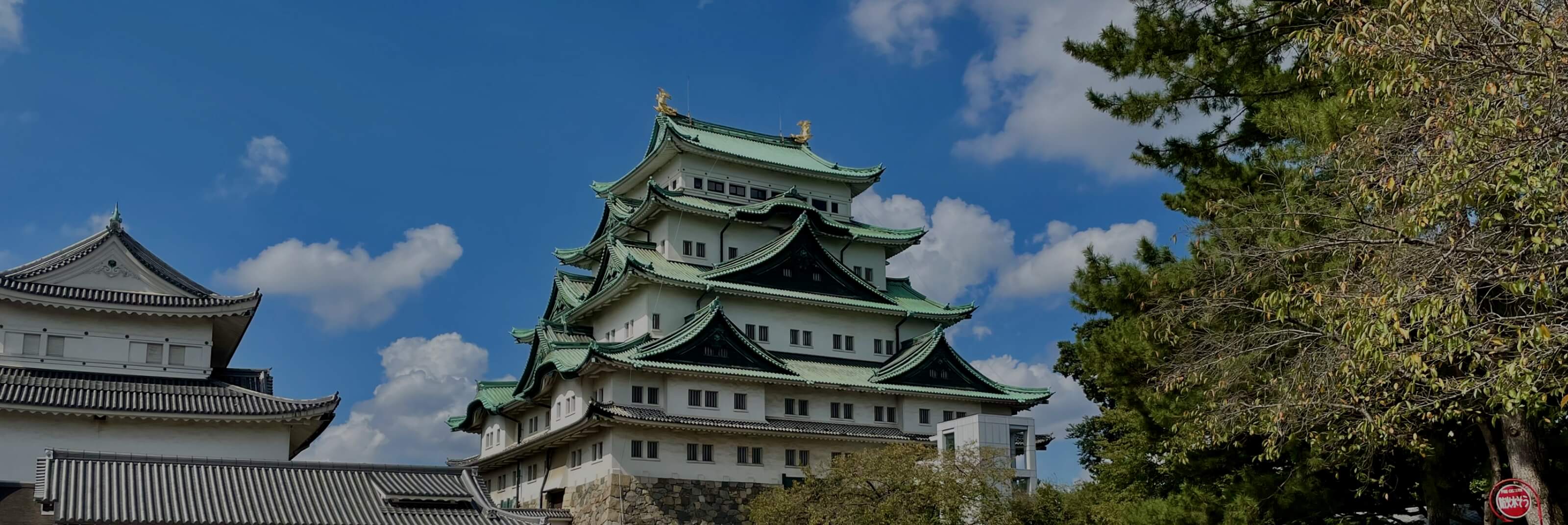
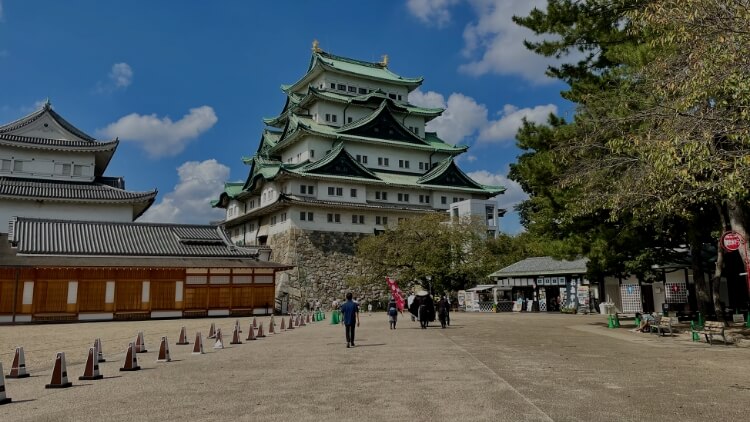
02The Old
in Modern Japan
City of Nagoya
Nagoya and the Owari Tokugawa

Nagoya Castle in the city center
Nagoya is located in what is now Aichi Prefecture, a region formerly known as Owari Domain, a fief granted by the Tokugawa clan in the Edo period. You will hear the name Tokugawa many times because its first leader, Tokugawa Ieyasu, unified Japan in 1603 during the Warring States Period and became the Shogun. His clan maintained peace in the country for over 250 years. The Owari Domain is said to be one of the three Tokugawa families based in Nagoya, along with Mito Domain and Kii Domain. This article is a short trip into history, where we will encounter traces of the past. When we arrive in Nagoya on the Shinkansen, however, there is no sign of any of this. Nagoya Station (the main station) is between massive new skyscrapers, making it difficult for even the sun to shine on the platform. Nagoya Castle will be our first destination on our journey. So, let's head to the subway station underneath.
Nagoya Castle

Nagoya Castle and Honmaru Palace
The castle is only a stone's throw from today's town hall and is the most impressive monument reminiscent of the samurai era. Surrounded by huge moats and pine-covered ramparts, parts of the castle keep peeking through the treetops. The anticipation grows as the castle slowly becomes visible. The main entrance consists of a huge, heavy gate, embedded in stone ramparts whose individual boulders sometimes exceed the size of a medium-sized car.
As soon as we reached the castle park, we were greeted with our first surprise, Ieyasu Tokugawa! Although it was performed by an actor, his appearance, armor, and retainers took us to the world of an old samurai film. We continued walking down the historic paths into the castle after a brief talk and selfie with the proud warlord. When we saw the castle tower and its Honmaru Palace, we were shocked: everything appeared to be clean and new, why was that? Unfortunately, the Second World War left its mark on Nagoya. Air raids burned the castle tower and palace to the ground. Although the actual castle was rebuilt relatively quickly in 1959, the reconstruction of the Honmaru Palace was not scheduled to begin until 2009 and will not be completed until 2018.

Replica of Kinshachi
There is a question that has never left our mind: What makes the castle so special? Aside from the lavishly decorated Honmaru Palace, which we will explore shortly, the castle's most notable features are its two famed Kinshachi: Golden tiger-headed carps, boldly enthroned on the castle tower's gables. These Kinshachi are over 2.50 meters tall and are covered in 18-carat gold. Its dragon-like glow on the roof is stunning even from a distance.
Nagoya Castle was constructed as a symbol of defense against attack and destruction. Since its completion in 1615, the castle has been spared from enemy attacks, at least until 1945.

Waiting room at Honmaru Palace
Now we've arrived at the most spectacular part of the castle: Honmaru Palace. The hallway's floorboards squeak under our feet, not because they're warped or poorly constructed. It is designed to make it difficult for assassins to move through the corridors at night without being spotted. The reason for this tight security is that this place serves as the accommodation for the shogun and his entourage.

Ornate decoration in the Honmaru Palace
All the skills of Japanese craftsmanship were combined to create this unique one-story building of 3100 square meters. What is unique about the architecture of the Nagoya area, including the Honmaru Goten, is not only its structural excellence but also the use of Hinoki cypress wood, which has a special fragrance. The scent of cypress invites you to walk through the corridors and enjoy the elaborately decorated rooms from there. The decorations are initially limited to hand-painted sliding screens depicting natural landscapes from feudal Japan.
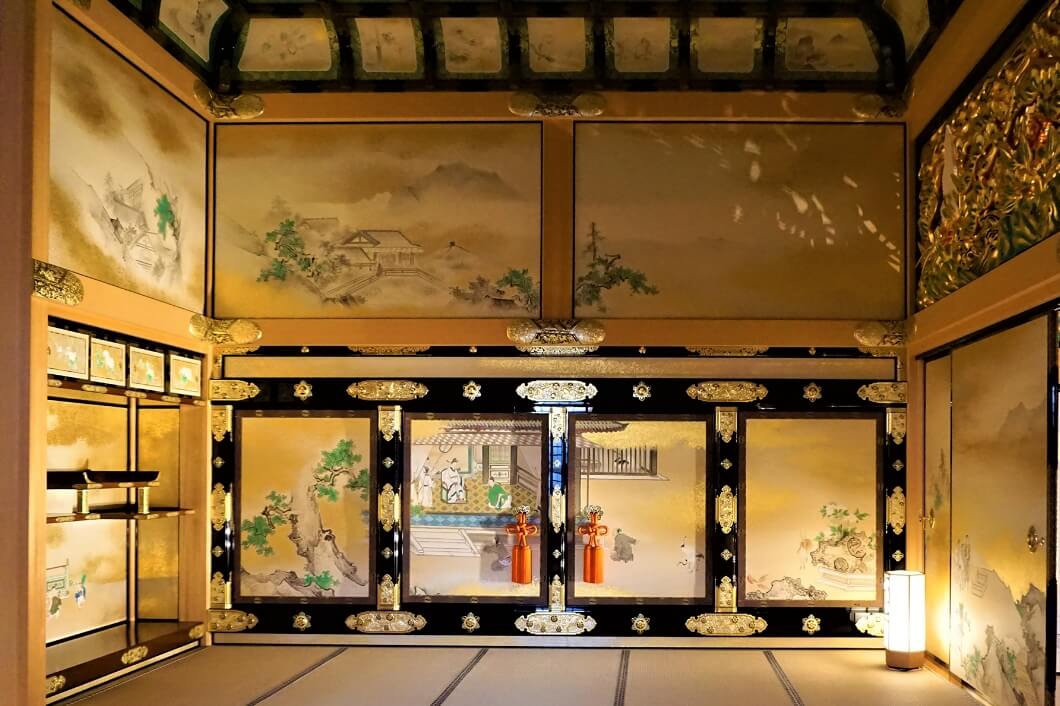
Jodannoma in the Honmaru Palace
The further we went into the palace, the more noble and elaborate the individual rooms became. At some point, we wondered whether this splendor could be surpassed, and it did! We found painting-like carvings above the partition walls. Even the beams were trimmed with elaborate sheet metal. But the crowning glory was the Jorakuden hall with its Jodannoma (the raised room). The sophisticatedly decorated room took visitors' breath away. Only the shogun and the most important feudal lords were allowed to stay. The Tokugawa Shogunate was officially bound to its seat in Edo (today's Tokyo), so some of the Tokugawa clans who lived in Nagoya had their residence built on the castle grounds. Thus, the Honmaru Palace was at that time the most expensive holiday home in Japan rather than the actual residence of the Tokugawa shogun.
The Tokugawa Art Museum and Tokugawa Garden

The Tale of Genji Picture Scroll
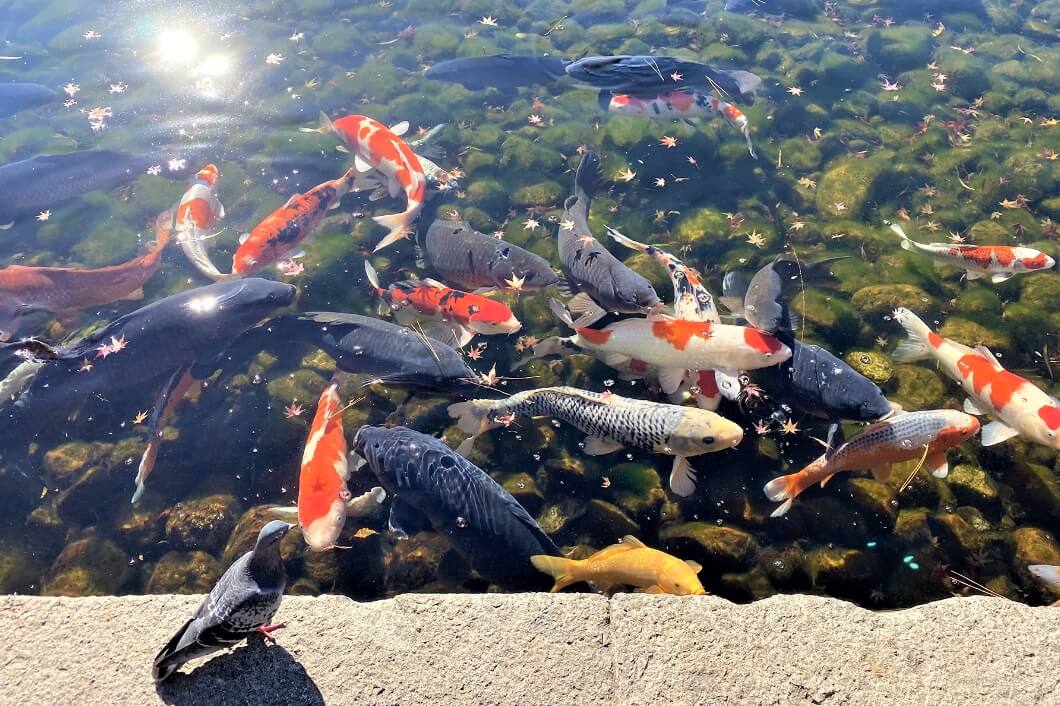
Carp in Ryusenko
We arrived at the Tokugawa Art Museum after a little longer taxi ride through the beautiful city. The museum, which is located next to Tokugawa Garden, houses incredible ten thousand exhibits. It has not only the world's largest collection of samurai swords, armor, and innumerable art treasures from the tea ceremony and Noh theater, but also an illustrated scroll depicting The Tale of Genji. This is arguably the most important novel in Japanese history and is classified as a national cultural heritage. As samurai fans, the first thing we looked for was the armor and sword of Tokugawa Ieyasu which he used and wore in the battles of the Sengoku period.
The individual exhibits are overwhelming in their beauty. We were often amazed by the finely crafted objects, most of which are several hundred years old. An employee of the museum told us that due to a large number of exhibits, not all of them can be presented, which is why the museum hosts seasonal special exhibitions.

River course in Tokugawa Garden
But it is not only works of art that the museum has to offer. The Houzentei restaurant in the Kansenro, a two-story building between the garden and the museum, offers its guests traditional Japanese cuisine with a first-class view of the Ryusenko, the ornamental pond of Tokugawa Garden. Besides the Ryusenko Pond, the garden also houses two beautiful waterfalls, a tea house, and seasonal flower exhibitions. We find ourselves squatting on the banks of the pond, trying to stroke one of the magnificent, colorful koi carp that frolic shallowly beneath the water's surface. While walking around, you will come across a variety of views that are reminiscent of the wild nature of Japan. In addition to stone islands reminiscent of the rocks and islands of a coastal region, there are also footbridges and stone steps leading across the water, always with black pines or old maples in the background.
The six-meter-high waterfall at the highest point of the garden, surrounded by stones and maples, was so picturesque that we couldn't help but stay there for long. Especially in spring and autumn, the garden's colorful maples proudly show off their colorful foliage to observers; even at the end of October, the temperature is over 15 degrees Celsius, and the sun's rays play with the red to orange leaves of the trees, giving the garden an autumnal charm.
Shikemichi

Shikemichi old town district
Shikemichi, a little nested old town district with a charming ambiance, is about 10 minutes on foot from Nagoya Station. The historic merchants' area, surrounded by skyscrapers, sits like a rock in the waves, defying the relentless forces of growth. Many large merchant buildings from the Edo period can be found, suggesting that rice, kimono silk, and other valuables were traded here.

Entrance to a restaurant and cafe
Small cafes, hotels, and boutiques are now integrated into the well-preserved commercial buildings, inviting visitors to shop and linger. The typical color combination of whitewashed walls and dark wood, but also the loving decorations, add colorful accents to the urban landscape. In front of the houses, some of which are still inhabited, you will find moss balls, flowerpot-like bamboos, and in some cases, the bonsai tree. These decorations, combined with the winding alleys of the small district, encourage us to explore again and again. Often, the rows upon rows of traditional-style residences make picturesque streets that are rarely seen. The renovated shops and inns also show the Japanese ability to combine the traditional with the modern. Those looking for modern, stylish accommodation in a traditional design with the appropriate surroundings will likely fall in love with this place.
Owari Tea Culture and the Tamesaburo Memorial Museum

Matcha tea with mochi dessert at the memorial museum
Aside from the proud Owari Tokugawa clan, there were a number of notable individuals. Furukawa Tamesaburo, a talented businessman who had achieved success in a variety of industries, was one of them. Throughout his long life, he enjoyed collecting art objects and drinking Japanese tea in his spare time. In his old age, he donated his collectibles and opened the Furukawa Art Museum in 1991, with the desire to make the collected works available to the public. Before his death, Tamesaburo also wanted to make his residence, Ishun-Tei, a place of relaxation for everyone and had it converted into an exhibition space with a café.

Inner courtyard of the Tamesaburo Memorial Museum
The Tamesaburo Memorial Museum is a fantastic place to appreciate the Owari Domain's tea culture as well as the old samurai culture. It took us ten minutes to get there from the station. This is the former residence of the art collector. Surrounded by skyscrapers, the estate is enthroned on a stone foundation that is almost reminiscent of a castle complex. The tall and straight conifers of the garden suggest a special place even from a distance. It looks like a green oasis in the urban landscape. Upon entering the main gate, we immediately noticed the beautiful main house, the Ishun-Tei built in the Sukiya style.

Inner courtyard of the Tamesaburo Memorial Museum
This is one of the most important architectural styles of the Japanese pre-industrial era. A style that reflects the aesthetics of old Japan in every corner of the property. The beauty of this structure, unlike the Honmaru Goten, rests in its simplicity and harmony with nature. Eight large tea rooms display mainly teaware by local artists. Each individually designed room is arranged so that visitors can enjoy the view of the garden while drinking tea. The building also has a courtyard planted with bamboo. Although most of the rooms are currently used as exhibition spaces, the cleverly arranged seating and integrated cafe allow visitors to enjoy a cup of tea during their visit while admiring the beautifully landscaped garden. It feels like a little oasis.
Because of the variety of vegetation, the garden exhibits all four seasons. Aside from the cherry blossoms in the spring and the colorful maples in the autumn, the garden has a plethora of evergreens. The large proud trees, which Tamesaburo was convinced housed spirits, provide shade for the entire property, especially during the hot summer months.
I was like a child trying to place my feet precisely on the large river stone so as not to step on the surrounding moss. As I look around, I realized that I was in the middle of a garden surrounded by moss, bamboo, and stone steps. Once again, the view took my breath away. At my feet, a man-made river, modeled after the Kiso River that flows into the sea at Nagoya, ripples through the air. This artificial river separates the main house from the tea house, called Chisoku-an, where tea ceremonies are still held today. The former residence is certainly worth a visit, with its aesthetics profoundly tied to nature everywhere.

